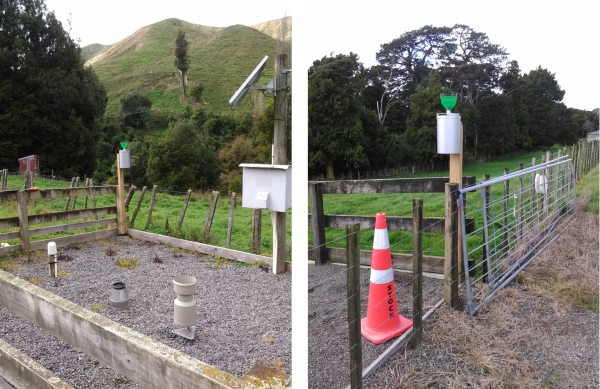Stable hydrogen and oxygen isotopes in rainfall and rivers can provide a powerful tool to explain the pathways and speed of water movement through catchments.
As part of NIWA’s National Hydrological Project, NIWA, GNS and Landcare are establishing a surface water/groundwater hydrological model coupled with water age tracer in collaboration with 3 regional councils. This will enable the project team (i.e. CRIs and regional councils) to relate changes in water sources (e.g. old groundwater or younger, quicker overland flow) to rivers through time as a first step to understanding and then simulating changes in water quality.
Rainfall and river water stable isotope time-series data have shown the sources of water used by trees within the upper reaches of the Waipara catchment in North-Canterbury. Invasive streamside willows were found to remove considerable quantities of groundwater and river water—reducing summertime flows by around 50%.
The collection sites are in the Horizons region at (Left) Makohine at Zoh’s Road and (Right) Porewa catchment.
Further information
Marttila, H., Dudley, B. D., Graham, S., Srinivasan, M.S. 2018. Does transpiration from invasive stream side willows dominate low flow conditions? An investigation using hydrometric and isotopic methods in a headwater catchment. In press - Ecohydrology. DOI: 10.1002/eco.1930
Dudley, B. D., Marttila, H., Graham, S., Evison, R., Srinivasan, M.S. 2018. Water sources for woody shrubs on hillslopes: An investigation using isotopic and sapflow methods. In press - Ecohydrology. DOI: 10.1002/eco.1926
External contacts
Mr Stephen Collins, Horizons Regional Council
Dr Hannu Marttil, University of Oulu, Finland


